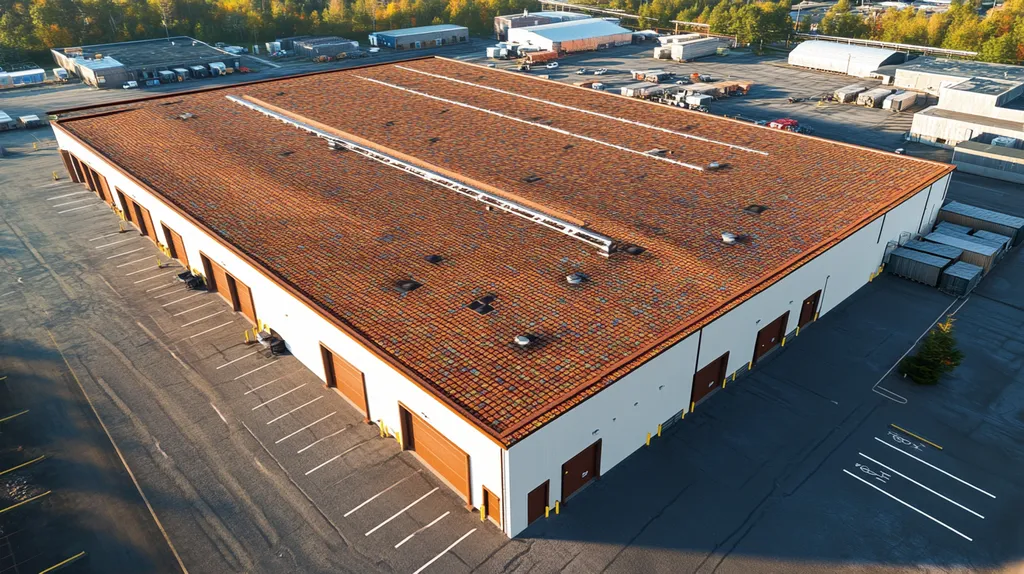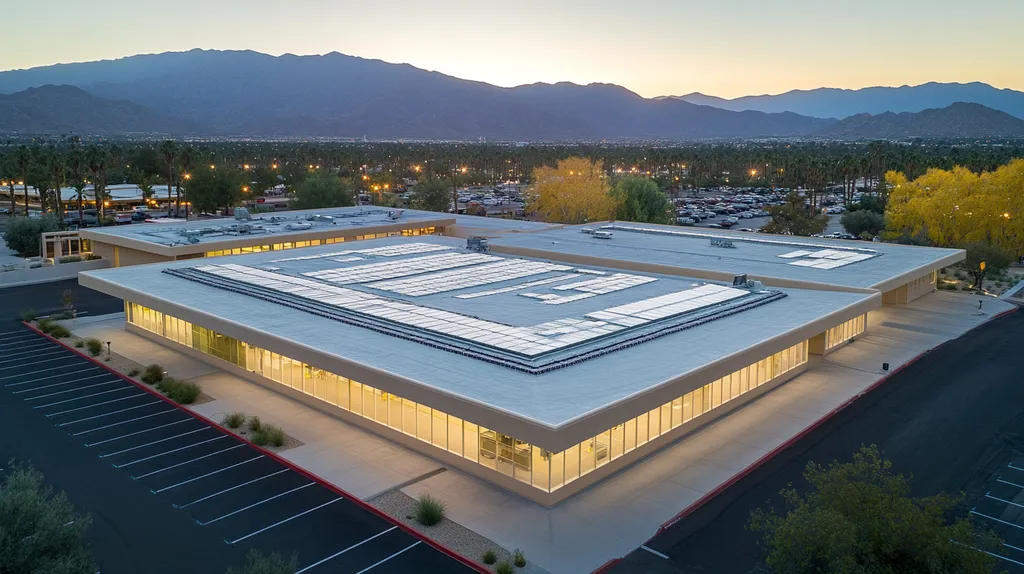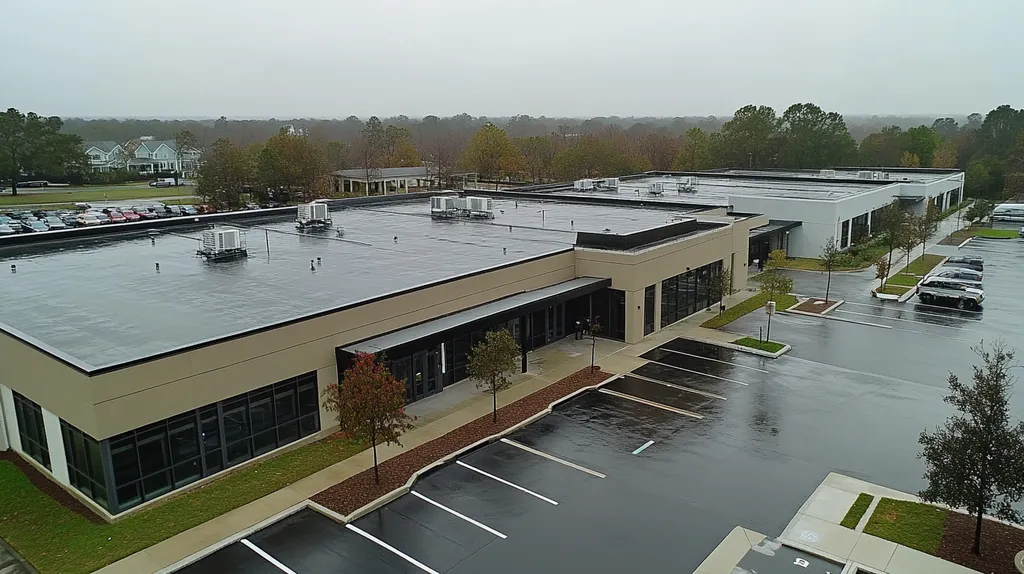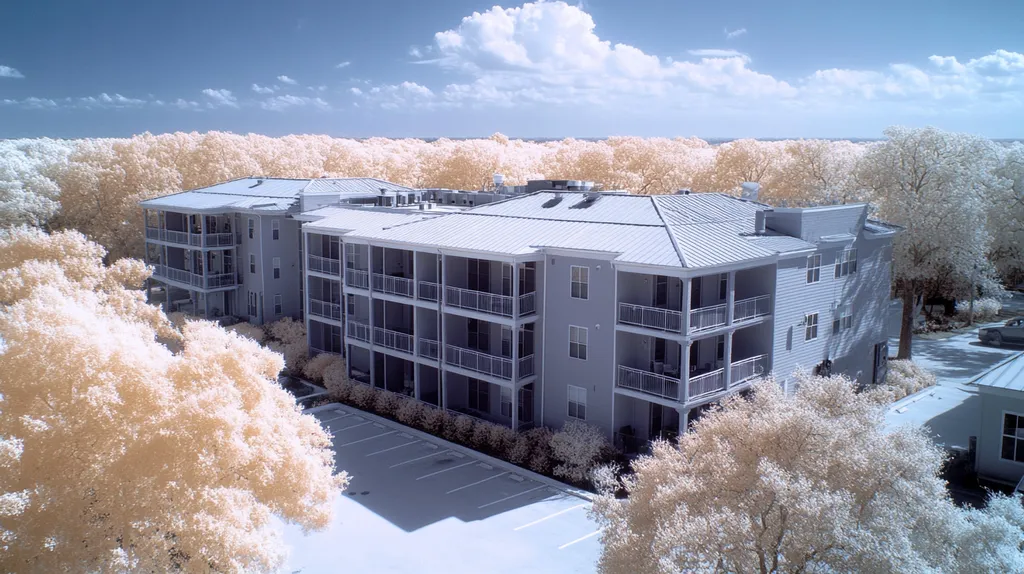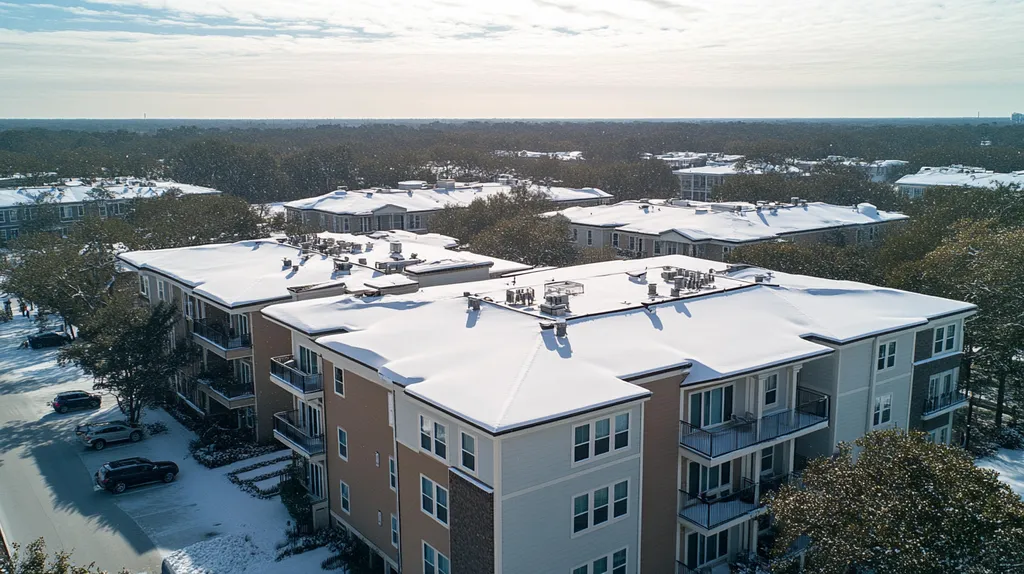Welcome to today’s Battle Royale featuring two roofing heavyweights: “TPO” in the east corner versus “PVC” in the west!
Tonight’s showdown pits these contenders against each other across six punishing rounds designed to test every aspect of their performance for commercial roof temperature adaptation.
At stake? Millions in potential costs, decades of building protection, and the critical performance demands of modern commercial and industrial facilities.
Our professional judging panel will evaluate each round on technical merit, real-world performance, and value delivery. After all six rounds, we’ll declare our ultimate champion.
Ladies and gentlemen, facility managers and building owners… it’s time to rumble!
ROUND 1: INITIAL COSTS & INSTALLATION
When selecting a commercial roofing system, the initial investment decisions can impact building performance for decades. Commercial roofs face multiple sources of heat-related damage from direct sun exposure, ambient air temperature, and reflected heat from adjacent buildings, making material choice crucial. Understanding the total cost implications of TPO versus PVC systems requires examining three key factors that influence both immediate expenses and long-term performance. (source: National Gypsum)
Material Expenses
Material costs represent the foundation of any roofing project’s budget. For a typical 20,000-square-foot commercial roof, the difference in material expenses between systems can exceed $40,000.
TPO membranes typically cost $3.50 to $5.50 per square foot installed, making them an attractive option for cost-conscious property owners. The lower price point reflects TPO’s simpler manufacturing process and widespread market adoption.
PVC membranes command premium pricing, ranging from $6.00 to $9.50 per square foot installed. This higher cost stems from more complex manufacturing processes and additional chemical components that enhance durability.
Based on pure material costs, TPO claims an ADVANTAGE in this category.
Installation Complexity
Installation complexity directly impacts labor costs and project risk. Smart material choices can reduce installation time by up to 30% while minimizing the chance of errors.
TPO installation follows straightforward processes that most qualified roofing crews can execute efficiently. The lighter weight materials and simpler welding requirements reduce physical demands on workers.
PVC installation demands more technical expertise and specialized equipment. The material’s higher rigidity requires careful handling, and proper chemical welding is critical for seam integrity.
With its more straightforward installation requirements, TPO gains another ADVANTAGE.
Project Timeline
Project duration affects both direct costs and business disruption. Faster completion means less exposure to weather risks during installation and quicker return to normal operations.
TPO projects typically progress 20-30% faster than equivalent PVC installations. The material’s flexibility and easier handling allow crews to cover more square footage per day.
PVC installations require more precise preparation and longer curing times for chemical welds. Additional quality control steps are needed to ensure proper seam bonding.
The faster completion potential gives TPO the ADVANTAGE in timeline considerations.
ROUND 1 WINNER: TPO
ROUND 2: DURABILITY & LIFESPAN
Commercial roofs face unprecedented challenges in today’s climate. With temperatures regularly swinging from scorching heat to freezing cold, the durability demands on roofing materials have never been higher.
Understanding how TPO and PVC respond to these temperature extremes is crucial for making informed decisions that protect your investment. The right choice can mean decades of reliable performance, while the wrong one could lead to premature failure.
Weather Resistance and Temperature Adaptation
When temperatures soar, roofing materials undergo intense stress. Heat-related membrane damage can dramatically shorten a roof’s lifespan, with surface temperatures reaching up to 180°F causing rapid molecular expansion and contraction. (source: National Gypsum)
TPO membranes offer good baseline temperature resistance, with reinforced sheets that help manage thermal cycling. Their white surface reflects heat effectively, helping moderate temperature fluctuations.
PVC demonstrates superior resistance to temperature extremes, maintaining flexibility and structural integrity even under severe thermal stress. Its molecular structure provides enhanced stability during expansion and contraction cycles.
For weather resistance and temperature adaptation, PVC claims the ADVANTAGE.
Lifespan and Maintenance Requirements
TPO roofs typically last 15-20 years with proper maintenance. They may require more frequent inspections and repairs in areas with extreme temperature swings.
PVC systems consistently achieve 20-30 year lifespans, even in challenging environments. Their superior chemical stability results in fewer maintenance requirements and better long-term performance.
The extended service life and reduced maintenance needs give PVC a clear ADVANTAGE in this category.
Impact Resistance and Material Stability
TPO membranes can become brittle over time when exposed to constant temperature fluctuations. This aging process may accelerate in particularly hot climates or areas with dramatic temperature swings.
PVC maintains its impact resistance and flexibility throughout its service life. Its chemical composition provides inherent stability against temperature-related degradation.
The superior long-term stability of PVC earns it the ADVANTAGE in this category.
ROUND 2 WINNER: PVC
ROUND 3: PERFORMANCE FACTORS
Commercial roofs face a constant battle against temperature extremes that can compromise structural integrity and lead to costly failures. Seasonal temperature changes cause roofing materials to expand and contract, creating stress that can result in cracks, splits, or separations if the wrong material is selected. Understanding how different membranes perform under these conditions is crucial for making informed decisions that protect your investment. (source: CP Rankin)
Thermal Performance
A roof’s ability to manage temperature fluctuations directly impacts building energy efficiency and structural longevity. The right material choice can reduce cooling costs by up to 30% while preventing heat-related deterioration.
TPO membranes offer excellent solar reflectivity, helping to reduce cooling loads during peak summer temperatures. Their white surface maintains reflective properties longer than many alternatives, though performance can decrease over time.
PVC systems demonstrate superior resistance to thermal cycling and maintain their protective properties even after years of exposure. Their molecular structure provides better stability during expansion and contraction cycles.
For overall thermal performance, PVC claims the ADVANTAGE.
UV Resistance
Ultraviolet radiation poses a significant threat to roofing materials, potentially accelerating degradation and reducing service life. Protection against UV exposure is essential for maintaining membrane integrity.
TPO incorporates UV inhibitors that provide good initial protection, but their effectiveness can diminish over time. This gradual reduction in UV resistance may lead to accelerated aging in high-exposure environments.
PVC’s chemical composition delivers inherent UV protection that remains stable throughout its service life. This sustained UV resistance helps prevent material breakdown and maintain long-term performance.
The superior long-term UV protection gives PVC the ADVANTAGE.
Flexibility and Adaptability
Daily temperature cycles create constant stress on roofing materials as they expand and contract. A membrane’s ability to flex without compromising its integrity is crucial for long-term performance.
TPO provides adequate flexibility in moderate conditions but can become less pliable in extreme temperatures. This reduced adaptability may lead to increased stress at seams and attachment points.
PVC maintains consistent flexibility across a broader temperature range, allowing it to better accommodate building movement and thermal stress. Its superior adaptability reduces the risk of tears and separation at critical points.
With better overall flexibility, PVC earns the ADVANTAGE.
ROUND 3 WINNER: PVC
ROUND 4: MAINTENANCE REQUIREMENTS
Temperature fluctuations create unique maintenance challenges for commercial roofing systems. As materials expand and contract with seasonal changes, the resulting stress can compromise roof integrity and lead to costly failures. Understanding how different roofing systems respond to these maintenance demands is crucial for protecting long-term investments and preventing premature replacement. (source: CP Rankin)
Routine Inspections and Upkeep
Commercial roofs require regular inspection to identify and address temperature-related stress points before they develop into serious problems. The frequency and complexity of these inspections directly impact maintenance budgets and building operations.
TPO roofs typically demand quarterly inspections, particularly in regions with extreme temperature variations. Special attention must be focused on seams and attachment points where thermal movement creates the most stress.
PVC systems generally require less frequent inspections, often performing well with semi-annual checks. Their superior chemical stability and resistance to temperature-induced stress result in fewer inspection points.
Based on reduced inspection requirements, PVC claims the ADVANTAGE.
Repair Complexity
When temperature-related damage occurs, the ease and effectiveness of repairs significantly impact both immediate costs and long-term performance. Quick, reliable repairs help prevent small issues from escalating into major problems.
TPO repairs can be challenging, especially in temperature extremes. The material’s sensitivity to heat during welding repairs requires precise control and experienced technicians.
PVC offers simpler repair procedures that remain effective across a broader temperature range. The material’s stable welding characteristics make repairs more reliable and less dependent on perfect conditions.
With more forgiving repair requirements, PVC earns the ADVANTAGE.
Long-Term Cost Impact
The true cost of maintenance extends far beyond routine inspections and basic repairs. Understanding the full financial impact requires examining how maintenance needs evolve throughout the system’s lifespan.
TPO systems often see escalating maintenance costs as they age, particularly in areas with significant temperature swings. The cumulative effects of thermal stress can accelerate wear patterns and increase repair frequency.
PVC maintenance costs typically remain more stable over time, with better resistance to temperature-induced aging. This predictability allows for more accurate long-term budget planning.
The more consistent maintenance profile gives PVC the ADVANTAGE.
ROUND 4 WINNER: PVC
ROUND 5: SUSTAINABILITY CREDENTIALS
Environmental responsibility increasingly drives commercial roofing decisions as buildings face stricter energy codes and sustainability requirements. Temperature fluctuations create unique challenges, as roofing materials expand and contract with seasonal changes, potentially compromising both performance and environmental impact. Understanding how roofing choices affect long-term sustainability has become crucial for property owners facing growing pressure to reduce their environmental footprint. (source: CP Rankin)
Energy Efficiency
A roof’s ability to manage temperature fluctuations directly impacts building energy consumption and environmental performance. The right material choice can reduce cooling costs by up to 35% while minimizing the need for additional insulation.
TPO membranes excel in solar reflectivity, maintaining their bright white surface longer than most alternatives. This high reflectance helps reduce cooling loads during peak summer temperatures and minimizes urban heat island effects.
PVC systems offer good initial reflectivity but may require more frequent cleaning or recoating to maintain optimal performance. Their thermal performance can degrade more quickly in areas with extreme temperature variations.
For overall energy efficiency, TPO claims the ADVANTAGE.
Material Lifecycle
The environmental impact of roofing materials extends from manufacturing through disposal. Sustainable options should minimize resource consumption while offering clear paths for recycling or repurposing.
TPO manufacturing requires fewer harmful chemicals and produces minimal waste. The material can be fully recycled at end-of-life, often finding new life in other construction products.
PVC production involves more complex chemical processes and higher energy consumption. While technically recyclable, PVC’s chemical composition makes recycling more challenging and energy-intensive.
TPO’s simpler composition and better recyclability earn it the ADVANTAGE.
Environmental Impact
Modern roofing must balance immediate performance with long-term environmental consequences. This includes considering manufacturing emissions, installation impact, and eventual disposal effects.
TPO’s simpler chemical makeup and manufacturing process result in lower greenhouse gas emissions during production. Its lighter weight reduces transportation impacts and installation equipment needs.
PVC manufacturing generates more volatile organic compounds and requires more energy-intensive processes. The material’s higher weight increases transportation emissions and installation complexity.
The lower environmental footprint gives TPO the ADVANTAGE.
ROUND 5 WINNER: TPO
ROUND 6: SPECIALIZED APPLICATIONS
Commercial roofs face unique challenges when deployed in specialized environments where standard performance metrics may not apply. Regions experiencing extreme temperature variations demand roofing systems specifically engineered to handle thermal stress while meeting specialized operational requirements. Understanding how different materials perform under these demanding conditions can prevent costly failures and extend roof lifespans. (source: Aquila Commercial)
Foot Traffic Resistance
Rooftop equipment maintenance, solar panel installations, and regular inspections create constant foot traffic that can damage roofing membranes. The ability to withstand this repeated stress without compromising waterproof integrity is crucial for long-term performance.
TPO membranes show adequate resistance to occasional foot traffic but can develop wear patterns under regular use. Their thinner profile and limited puncture resistance make them vulnerable to damage from dropped tools or equipment.
PVC systems offer superior puncture resistance and maintain their structural integrity even under heavy foot traffic. Their thicker composition and enhanced flexibility better absorb impact stress without compromising the membrane.
For applications requiring regular roof access, PVC claims the ADVANTAGE.
Chemical Resistance
Industrial environments expose roofing materials to harsh chemicals, oils, and environmental pollutants. Restaurant exhaust, manufacturing emissions, and acid rain can accelerate membrane degradation without proper chemical resistance.
TPO provides basic protection against common chemical exposures but may degrade when exposed to petroleum products or industrial solvents. Extended contact with these substances can compromise membrane integrity.
PVC demonstrates exceptional resistance to a broad spectrum of chemicals, including acids, bases, and organic compounds. Its superior chemical stability prevents material breakdown even under sustained exposure.
The comprehensive chemical protection gives PVC the ADVANTAGE.
Wildlife Protection
Birds, rodents, and other wildlife can cause significant damage to roofing systems through nesting activities and physical deterioration. Prevention of these issues requires materials that resist punctures and discourage animal intrusion.
TPO systems offer limited resistance to wildlife damage. Their softer composition makes them more susceptible to pecking, scratching, and other forms of animal-related deterioration.
PVC membranes present a more formidable barrier against wildlife damage. Their tougher surface composition and enhanced tear resistance better withstand animal activity.
The superior resistance to wildlife damage gives PVC the ADVANTAGE.
ROUND 6 WINNER: PVC
AND THE WINNER IS…
After six grueling rounds of technical analysis, in a hard-fought battle that tested every aspect of commercial roofing performance, we have our verdict!
With a commanding 4-2 victory, PVC claims the championship belt! This powerhouse dominated in durability, performance, maintenance, and specialized applications, showcasing superior temperature adaptation and chemical resistance that make it the undisputed heavyweight champion for demanding commercial environments.
But don’t count TPO out! This scrappy contender proved its worth by clinching both the cost-effectiveness and sustainability rounds. For budget-conscious projects in moderate climates where initial investment and environmental impact are top priorities, TPO remains a formidable challenger.
Remember, folks: Every building brings its own unique requirements to the ring. Local climate conditions, property specifications, and operational demands all play crucial roles in determining the ultimate victor for your specific project. Always consult with qualified roofing professionals who can evaluate your building’s particular needs and circumstances.
When the final bell rings, the true champion isn’t just about winning rounds – it’s about matching your facility’s specific requirements with the right contender’s strengths. Choose wisely, building owners, because in the high-stakes arena of commercial roofing, there’s no prize for second place!
FREQUENTLY ASKED QUESTIONS
Q. What are the initial costs of TPO vs. PVC for commercial roofs?
A. The initial costs of TPO membranes range from $3.50 to $5.50 per square foot, while PVC costs between $6.00 and $9.50 per square foot. TPO is often favored for its lower material expenses and simpler installation processes, potentially leading to lower initial project costs.
Q. How do TPO and PVC differ in durability for industrial roofs?
A. TPO typically lasts 15-20 years with proper maintenance, while PVC can last 20-30 years. PVC’s superior molecular structure provides better resistance to temperature swings and weather extremes, making it more durable in harsh conditions.
Q. What materials perform best under temperature fluctuations in commercial roofs?
A. PVC membranes generally perform better under extreme temperature fluctuations, maintaining structural integrity and flexibility. TPO does a good job but can become less effective if exposed to significant thermal cycles over time, leading to potential issues.
Q. What are the maintenance needs for TPO vs. PVC on commercial roofs?
A. TPO roofs typically require quarterly inspections, particularly in extreme climates, while PVC roofs may only need semi-annual checks due to their superior resistance to temperature-induced stress. This can ultimately lead to lower maintenance costs over time.
Q. Which commercial roof material is more sustainable, TPO or PVC?
A. TPO is generally considered more sustainable due to its lower energy consumption during production and better recyclability. PVC, while technically recyclable, poses challenges in terms of environmental impact due to its more complex manufacturing processes.
Q. How do TPO and PVC handle specialized applications on industrial roofs?
A. PVC membranes are superior for specialized applications such as rooftops with frequent foot traffic, as they offer better puncture resistance. TPO may show wear if subjected to similar conditions, leading to potential damage.
Q. What factors should influence my choice between TPO and PVC for commercial roofing?
A. Consider factors like initial costs, durability, maintenance requirements, and environmental sustainability. If your roof experiences extreme temperature variations, PVC might be the preferable choice due to its superior durability and lower maintenance needs.

